7 May 2013
Brallier Formation 2: tectonic structures
Posted by Callan Bentley
Yesterday we examined primary sedimentary structures (including trace fossils) at an outcrop of Devonian-aged Brallier Formation turbidites between Deerfield and West Augusta, Virginia. Today, we’ll zoom in on the tectonic structures at the site: folds, faults, and joints.
Remember, you don’t have to take my word for it. You can explore it for yourself in this M.A.G.I.C. GigaPan:
One thing that’s kind of cool about that GigaPan is the very subtle view of folding. Note the the prominent sand stratum (a big turbidite) dips away from us on the left side of the outcrop, but twists about halfway across, and dips moderately toward the viewer on the right. It’s subtle because we’re not viewing the fold in profile view (i.e., on an exposure orthogonal to the fold hinge). Instead, the outcrop face is oblique to, and almost parallel to, the hinge. Here is a different view, from a hundred yards north up the road, and here the fold is more obvious:
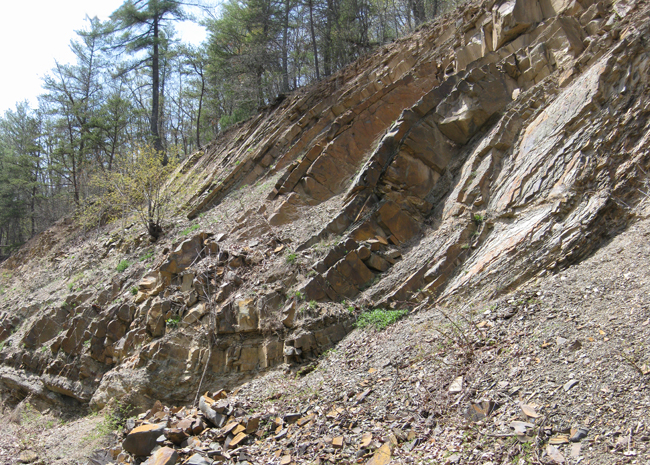
Folding here is Alleghanian in age: that’s when the Valley & Ridge province enjoyed the bulk of its deformation.
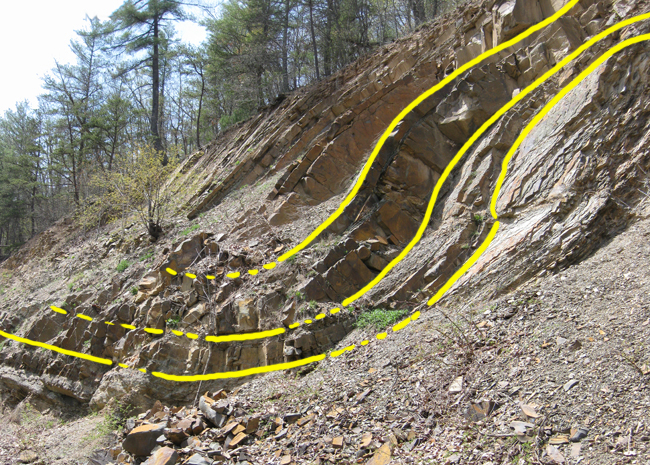
Folding was accomplished partially by flexural slip – that is, each relatively stiff bedding plane slid relative to its stratigraphic neighbors above and below. This means that the bedding planes are essentially being reactivated as a kind of fault plane. And, like fault planes, they are decorated with polish and slickensides:
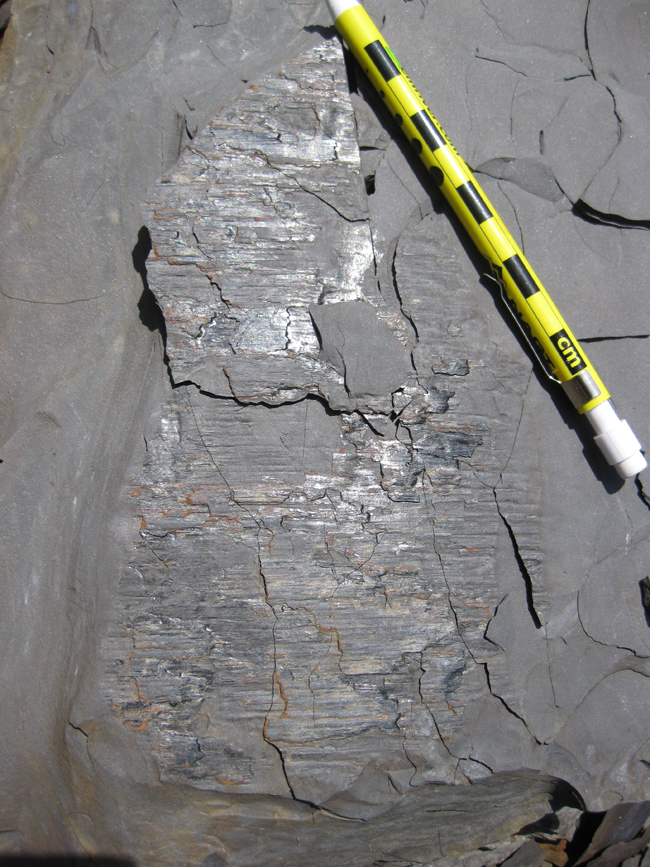
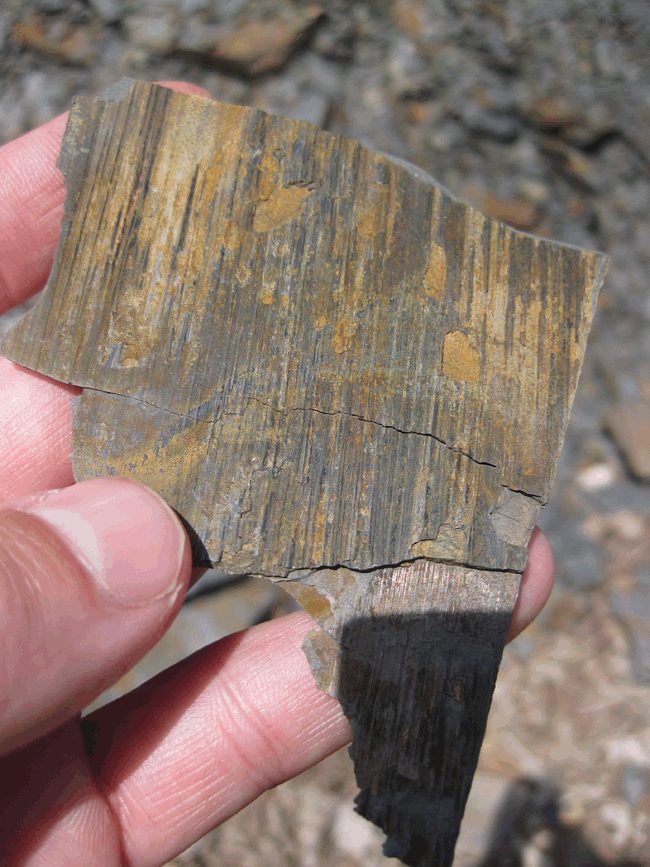
Elsewhere, the bedding planes accomplished folding by internally fracturing. Check out this chunk of graywacke from one of the bigger turbidites:
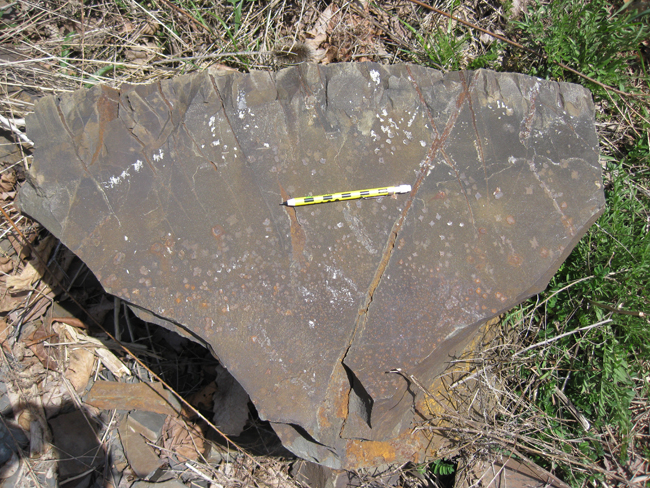
You can see a series of small extensional fractures on the upper edge: this would have been the outer part of the fold.
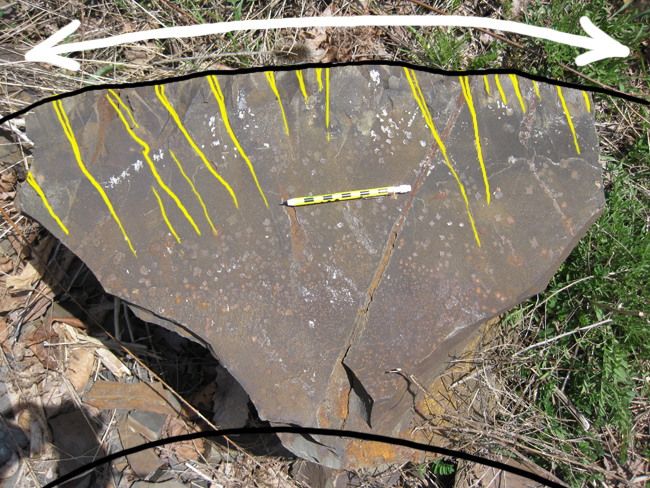
Many of the joints (fractures) at this site exhibit lovely plumose structure, that feathery fine anatomy that shows how the fracture surface originated and grew over time.
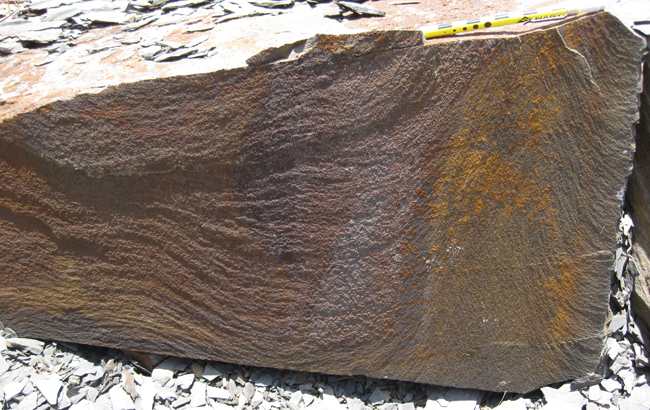
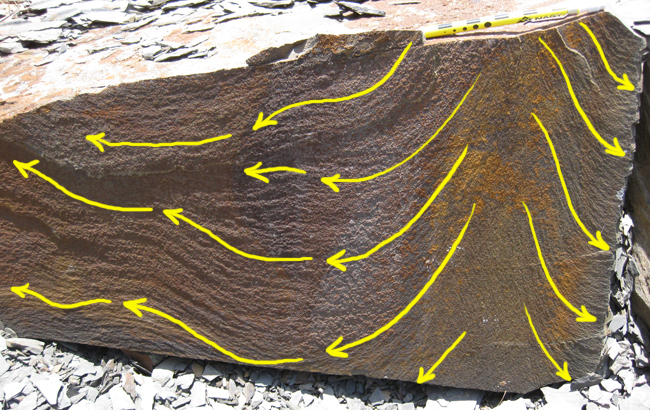
These joints are easy to find in the GigaPan above. In places, two intersecting joint sets give a lovely “sawtooth” to the edge of the beds where they crop out:
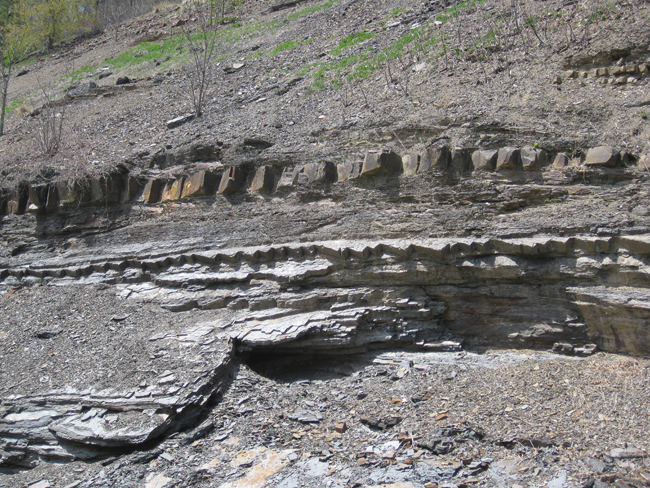
Fractures, of course, are great “plumbing” for subterranean fluid flow. Here, fluids flowing through the two bed-cutting joint sets produce a beautiful cross-hatching pattern highlighted by rust:
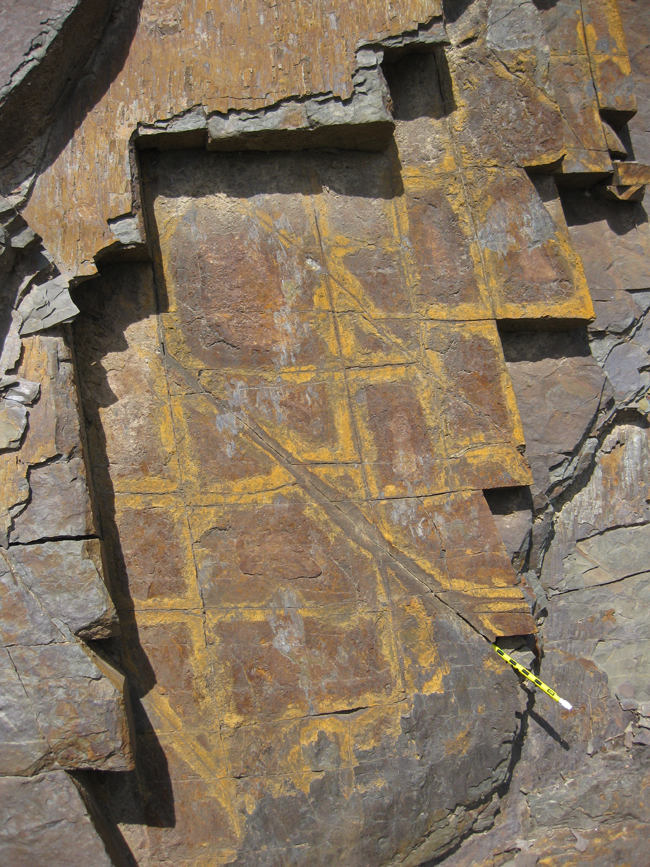
Some of the fluids were silica-rich, and deposited perfect little euhedral quartz crystals on the walls of the joint surface, transforming them from mere joints into veins.
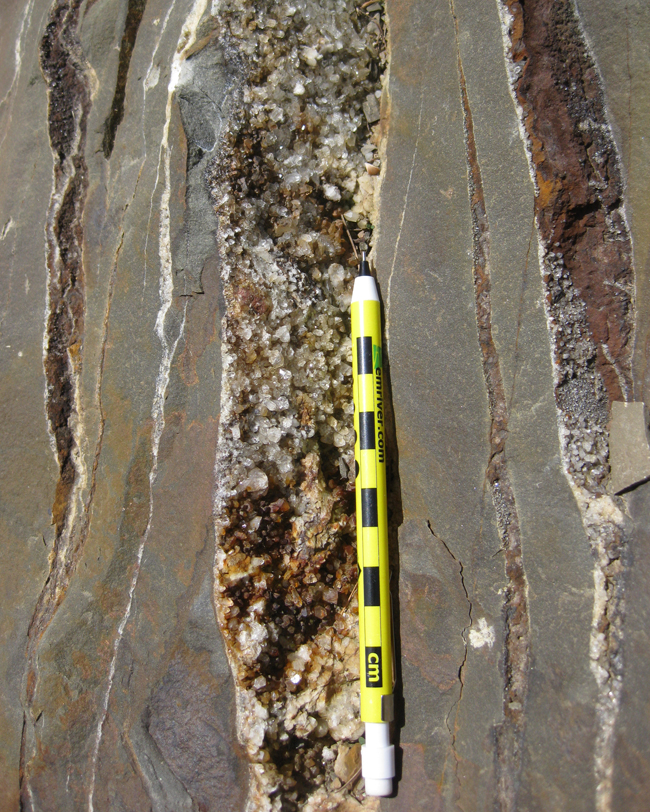
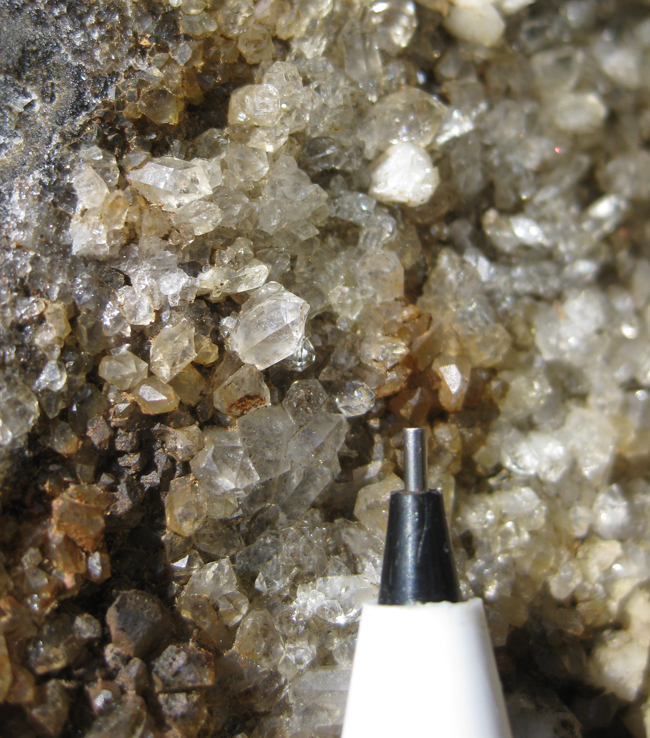
We spent a nice 45 minutes at the site, GigaPanning and looking around. There was a lot to see. I’d love to bring students back, but it’s a long way from NOVA.
Maybe some summer I’ll run a “Geology of Virginia” class that can travel around the state they way my summer Rockies field course travels around Montana. Then we could hit these outcrops that are further afield.


 Callan Bentley is Associate Professor of Geology at Piedmont Virginia Community College in Charlottesville, Virginia. He is a Fellow of the Geological Society of America. For his work on this blog, the National Association of Geoscience Teachers recognized him with the James Shea Award. He has also won the Outstanding Faculty Award from the State Council on Higher Education in Virginia, and the Biggs Award for Excellence in Geoscience Teaching from the Geoscience Education Division of the Geological Society of America. In previous years, Callan served as a contributing editor at EARTH magazine, President of the Geological Society of Washington and President the Geo2YC division of NAGT.
Callan Bentley is Associate Professor of Geology at Piedmont Virginia Community College in Charlottesville, Virginia. He is a Fellow of the Geological Society of America. For his work on this blog, the National Association of Geoscience Teachers recognized him with the James Shea Award. He has also won the Outstanding Faculty Award from the State Council on Higher Education in Virginia, and the Biggs Award for Excellence in Geoscience Teaching from the Geoscience Education Division of the Geological Society of America. In previous years, Callan served as a contributing editor at EARTH magazine, President of the Geological Society of Washington and President the Geo2YC division of NAGT.